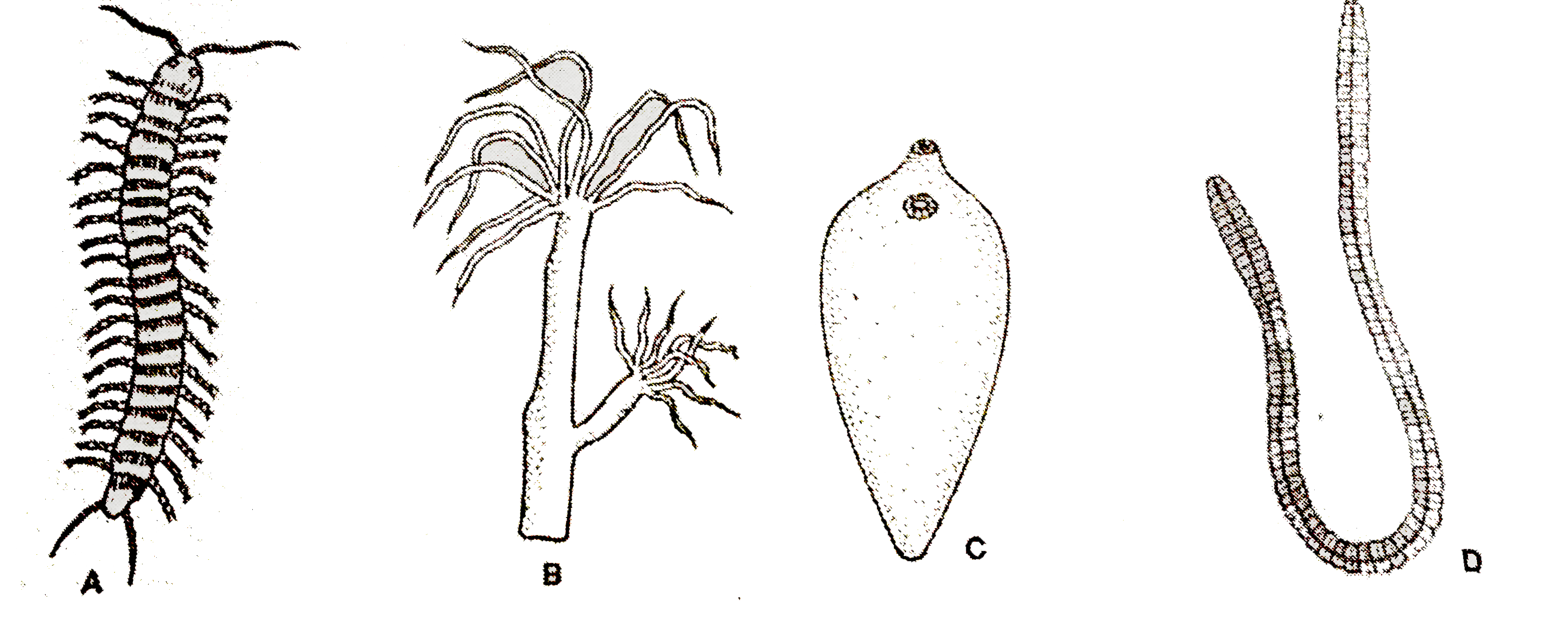(a) Identify two features possessed by all chordates
(b) In which class would you place any organism which has
(i) a scaly exoskeleton and a bony endoskeleton
(ii) a scaly exoskeleton and lay eggs outside water ?
The correct Answer is:N/a
Step by step video, text & image solution for (a) Identify two features possessed by all chordates (b) In which class would you place any organism which has (i) a scaly exoskeleton and a bony endoskeleton (ii) a scaly exoskeleton and lay eggs outside water ? by Biology experts to help you in doubts & scoring excellent marks in Class 9 exams.
Topper's Solved these Questions
- BOOK - LAKHMIR SINGH & MANJIT KAURCHAPTER - DIVERSITY IN LIVING ORGANISMSEXERCISE - Class Assignment1videos
DIVERSITY IN LIVING ORGANISMS
- BOOK - LAKHMIR SINGH & MANJIT KAURCHAPTER - DIVERSITY IN LIVING ORGANISMSEXERCISE - NCERT Textbook1videos
DIVERSITY IN LIVING ORGANISMS
- BOOK - LAKHMIR SINGH & MANJIT KAURCHAPTER - DIVERSITY IN LIVING ORGANISMSEXERCISE - Value Based5videos
DIVERSITY IN LIVING ORGANISMS
- BOOK - LAKHMIR SINGH & MANJIT KAURCHAPTER - IMPROVEMENTS IN FOOD RESOURCES EXERCISE - VERY SHORT ANSWER QUESTIONS28videos
IMPROVEMENTS IN FOOD RESOURCES
Similar Questions
An unfamiliar vertebrate is discovered in a tropical forest. It is observed to spend much of its time in water, has four limbs, eyes, nostrils, and body temperature which varies with that of its surroundings.
(A) To which class of vertebrates might this animal belong?
(B) What other features would you look for to be reasonably sure which was the correct class?View SolutionName two metals which react violently with cold water. Write any three observations which you would make when such a metal is dropped into water. How would you identify the gas evolved, if any, during the reaction ?
View Solution
Knowledge Check
- Question 1 - Select One
In the following questions one statement is given followed by two conclusions (I) and (II). You have to consider the statement to be true even if they seem to be at variance from commonly known facts. You have to decide which of the given concluşions, if any, follow from the given statements.
Statements : "Bats do not lay eggs and therefore, bats are not birds." Conclusions:
(I) All birds lay eggs.
(II) Only birds lay eggs.AOnly (I) followsBOnly (II) followsCBoth (I) and (II) followDNeither (I) nor (II) follows - Question 2 - Select One
Read the featured given below and select the option for animals which correctly describes the features mentioned:
I. All are exclusively marine, triploblastic, coelomate organism with a water vascular system.
II. A small group of warm-like marine animals with the organ system levels of the organization.
III. The body is covered by a calcareous shell and is unsegmented with a distinct head, muscular foot, and visceral hump.
IV. Triploblastic, pesudocelomate animals in
which alimentary canal is complete with a well developed muscular pharynx.AI-Asterias, II-Balanoglossus, III-Ascaris, IV-AncylostomaBI-Ascaris, II-Ophiura, III-Pila, IV-SepiaCI-Ascaris, II-Saccoglossus, III-Sepia, IV-OphiuraDI-Asterias, II-Balanoglossus, III-Pila, IV-Ascaris
Name two metals which react vilently with cold water. Write any three observations you would make when such a metal is dropped into water. How would you identify the gas evolved, if any during the reaction?
View SolutionName two metals which react violently with cold water, Write any observation you would make when such a metal is dropped into water. How would you identify the gas evolved, if any, during the reactions?
View Solution
(a) Identify figure A to D
(b) Which one of them is (i) diploblastic , (ii) triploblastic ?
(c) Which triploblastic animal is (i) Acoelomate (ii) Coelomate ?
(d) Which one belong to phylum
(i) Cnidaria , (ii) Platyhelminthes , (iii) Annelida , (iv) Arthropoda ?
(e) Which one of them has
(i) Organ level organisation , (ii) Organ-system level organisation ?
(f) Which one of them has excretory organs in the form of (i) Flame cells , (ii) Nephridia ?
(g) Which one of them has trachea as the respiratory organ ?View SolutionThe sea water contains water beetles, tadpole, fish and weeds.
(a) Write a food chain comprising all the given organisms.
(b) Which organisms in the food chain are (i) herbivore, and (ii) carnivores ?
(c) Which organisms are (i) predators, and (ii) prey ?
(d) Which organisms can trap solar energy to make food ?
(e) Which organism is a secondary consumer ?View SolutionThe question given below consists of a statement,followed by two arguments numbered I and II. You have to decide which of the arguments is a 'strong' argument and which is a 'weak' argument. Give answer (a) if only argument I is strong, (b) if only argument II is strong, (c) if either I or II is strong, (d) if neither I nor II is strong and (e) if both I and II are strong.
Statement: Should there be complete ban on use of all type of chemical pesticides in India?
Arguments: I. No. The pests will destroy all the crops and the farmers will have nothing to harvest.
II. Yes. The chemical pesticides used in agriculture pollute the water underground and this has become a serious health hazard.View SolutionThe question given below consists of a statement,followed by two arguments numbered I and II. You have to decide which of the arguments is a 'strong' argument and which is a 'weak' argument. Give answer (a) if only argument I is strong, (b) if only argument II is strong, (c) if either I or II is strong, (d) if neither I nor II is strong and (e) if both I and II are strong.
Statement: Should all the examinations upto Std. V be abolished?
Arguments: I. Yes. The young students should not be burdened with such examinations which hampers their natural growth.
II. No. The students will not study seriously as they will get automatic promotion to the next class and this will affect them in future.View Solution

